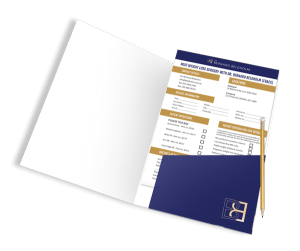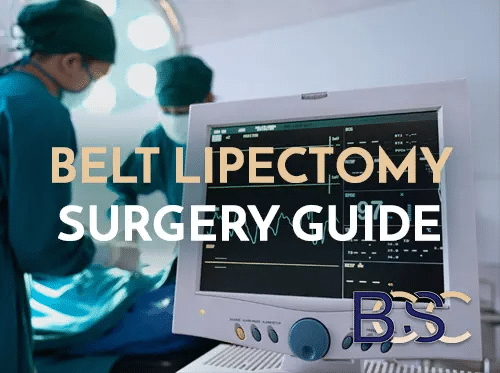When Can I Go Back to Work After an Abdominoplasty?
The decision to undergo abdominoplasty involves careful consideration and planning. While the physical aspect is a significant part of the surgical procedure, most patients contemplate its impact on their daily lives, like work commitment.
Ideally, most patients allocate about 4 weeks of leave from work for an abdominoplasty procedure. The recovery period, however, may vary from one patient to another.
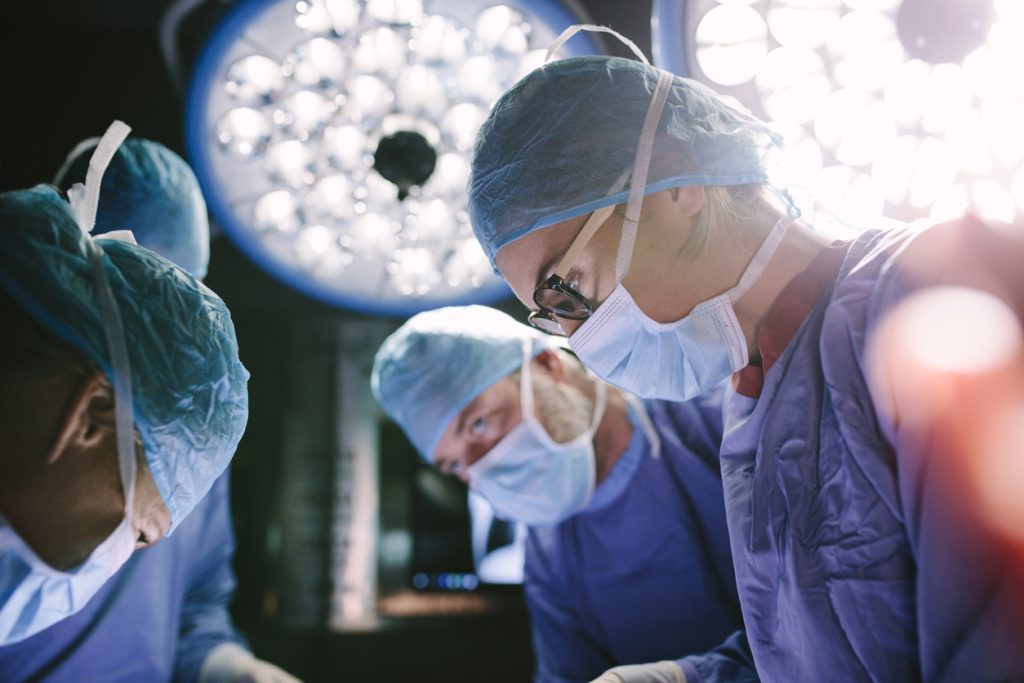
Therefore, understanding when it is advisable to return to work after an abdominoplasty is a crucial aspect of the decision-making process. This leads to a compelling question: What is the connection between one’s occupation and the ideal recovery period following abdominoplasty procedure? Let’s find out.
Type of Abdominoplasty
The type of abdominoplasty chosen significantly impacts the recovery timeline. Skin removal extent affects post-surgery sensations. A mini abdominoplasty offers a faster recovery than an extended abdominoplasty, making it less demanding than a full abdominoplasty.
Mini abdominoplasty
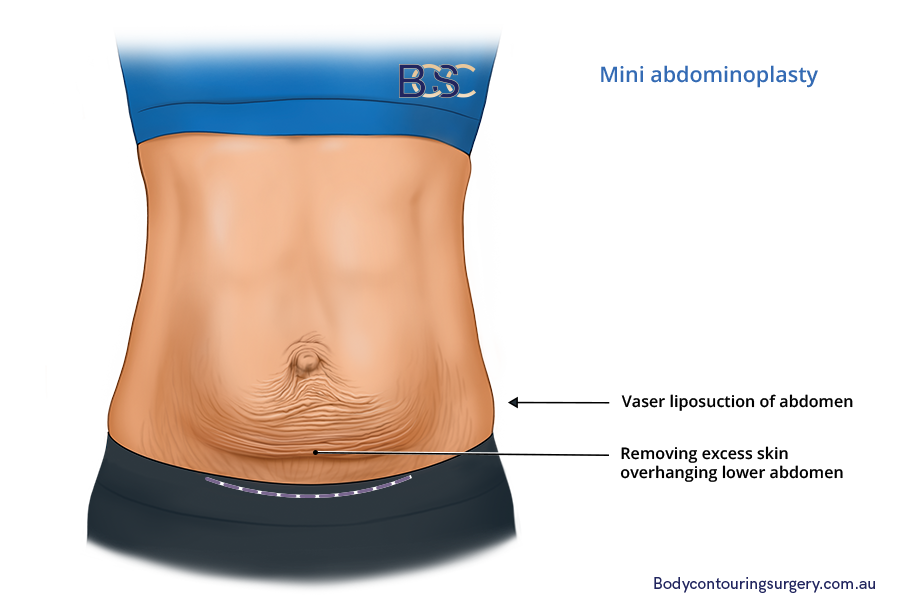
For a mini abdominoplasty, recovery typically lasts around 6 weeks. Patients with strong abdominal muscles may resume routines in 2 weeks. Also, healing rates vary, leading to a faster or slower recovery.
While proper healing continues for weeks, the primary recovery window is about 2 weeks. You can gradually resume normal activities after this, excluding intense exercise. However, at some time, you may need a few more weeks.
In the first week, a compression garment is recommended. It reduces swelling incision pressure and aids recovery. Consistent compression garments are crucial for optimum results despite an initial adjustment period. Mini abdominoplasty recovery tends to be shorter than an extended abdominoplasty.
Full abdominoplasty
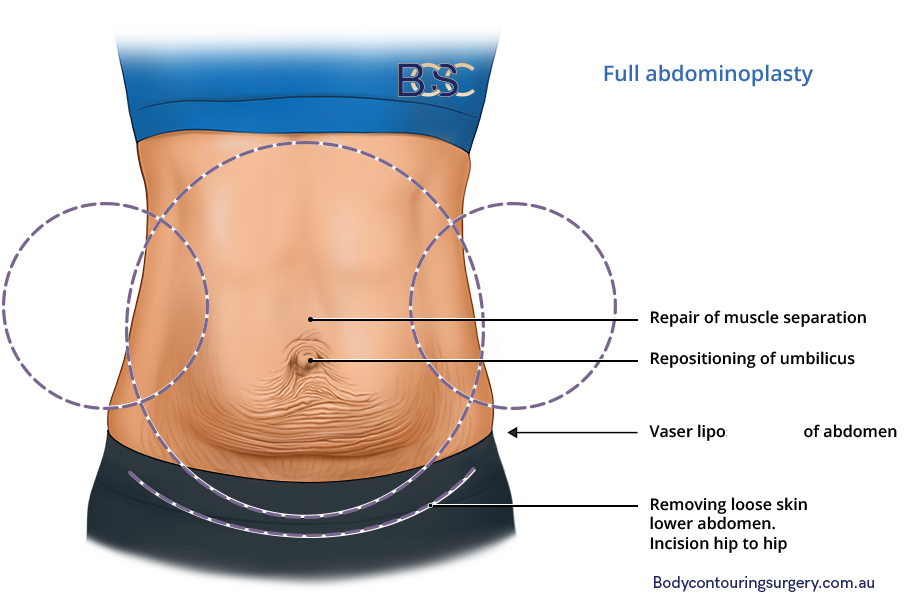
A full abdominoplasty typically necessitates an average of four weeks off work. However, for a sedentary worker, there’s a possibility of returning to their job as early as two to three weeks post-surgery. Note that this isn’t guaranteed; two weeks represents the minimum timeframe. On the other hand, patients with physically active careers generally require an average of four weeks off work.
Patients usually spend the night in the hospital recovery room after a major surgery. It’s also when patients receive crucial instructions from their surgeon regarding the care of the incision and their overall well-being.
Patients will need assistance returning home and monitoring during the initial few days. This is particularly vital as the incision is freshly made, and mobility is restricted. During this time, the full impact of the abdominoplasty’s side effects begins to kick in.
Belt Lipectomy, or Body Lift Surgery
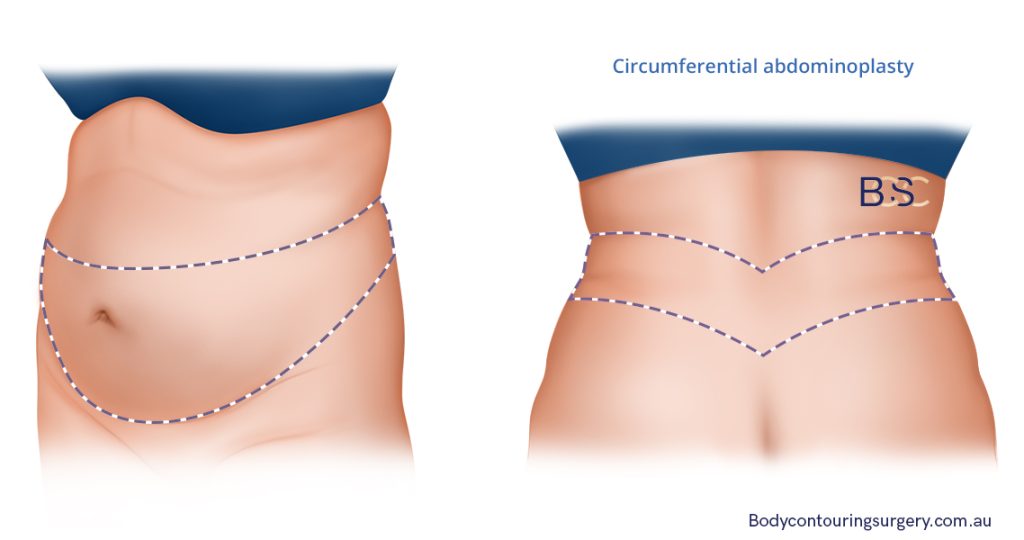
Some patients may find body lift (belt lipectomy) surgery beneficial after weight loss surgery, such as bariatric procedures. This surgery, also known as a belt limpectomy, total body lift, or LBL (lower body lift), is designed to remove excess skin after significant weight loss.
A body lift (belt lipectomy) combines three procedures into one. It removes more excess skin around the waistline, while lifting and tightening the loose skin around the waist, buttocks, and lateral thighs. This results in a flatter abdomen and reduced skin in the thighs and buttocks.
This surgery is comprehensive and typically requires a longer recovery period. Many patients can return to work in about four weeks, but recovery duration can vary based on individual factors.
For abdominoplasty revision surgery, which aims to repair the results of prior abdominoplasty, recovery time varies depending on the procedure’s extent. On average, expect about four weeks off work, but the type of surgery and job demand can influence downtime.
Abdominoplasty Recovery Timeline
Following abdominoplasty, the recovery times vary from person to person. It is, therefore, crucial to prioritise caution over haste. Here is a concise overview of the typical recovery stages:
Immediate Post-Surgery
After the procedure, the surgeon will insert drains to manage excess fluids, bandages and a compression garment that helps to manage swelling and support your abdomen during healing. During this period, the patient is encouraged to take gentle walks to prevent blood clots and maintain tissue flexibility. You should make sure not to overexert yourself.
First Week After Surgery
During the initial week post-surgery, it’s common to experience swelling, tightness, and bruising in the treated area. If you’re feeling discomfort, your surgeon may prescribe oral medication to alleviate it.
Drains used to manage fluid may be removed or changed after seven days. You will, however, continue wearing the compression garment for a few more days. It is imperative to refrain from exercise, heavy lifting, work commitments, smoking, and alcohol consumption during the early recovery phase.
Second Week
As you move to the second week of your recovery, you’ll notice that swelling will subside and bruising will fade. The tightness you initially experienced should also start to ease. Your specialist will evaluate your wound during the follow-up appointments and advise whether to continue wearing your compression garments.
The timing for returning to work may depend on the nature of your job. If your abdominoplasty was part of a comprehensive procedure that includes breast augmentation (augmentation mammoplasty) and liposuction (Suction-assisted lipectomy), your abdominoplasty requires additional time for recovery.
Around One Month
Your surgeon may recommend wearing the compression garment for approximately one month. After this period, you can gradually re-introduce light exercise into your routine. However, it is essential to avoid strenuous jobs and activities. Most patient can resume their daily routine and exercise after six weeks. However, the timeline can vary based on individual circumstances.
Maintaining a healthy weight before surgery and committing to a healthy lifestyle, can significantly reduce the risk of complications during your abdominoplasty recovery. You should also get ample rest for your body to heal correctly.
Returning to work will depend on the type of work you do and how well your body is responding to the surgery.
Occupation & abdominoplasty Recovery Downtime
All abdominoplasty patients must refrain from strenuous activities for at least six weeks. If your profession entails significant physical demands, a complete return to your work responsibilities is acceptable once you fully recover.
The typical timeframe for resuming your work is approximately four weeks. Naturally, individuals engaged in occupations demanding substantial physical exertion or heavy lifting will require an extended leave compared to someone with a desk job.
Your specialist general surgeon will provide precise guidelines regarding the recovery process, including specific activity restrictions and the ideal timing for your return to work. It is crucial to diligently adhere to these expert recommendations to prevent potential complications. You must also consider realistic recovery timelines during your initial tuck consultation.
Work From Home Jobs
As aforementioned, patient’s recovery experiences after abdominoplasty surgery can vary significantly. Some patients may feel well enough to tackle light computer tasks such as answering emails within a day or two after the procedure. Note that most patients experience peak physical discomfort on the second post-surgery day. This discomfort then gradually subsides as the day passes.
Therefore, avoiding making firm work commitments during the initial recovery phase is advisable, even if working from home. Also, it is best to limit movements during this delicate time. Your specialist general surgeon might advise you to postpone video meetings and work obligations for a few days post-surgery.
If you find yourself well enough to handle less demanding tasks during the first weeks, feel free to do so. However, it’s vital not to push yourself too hard. Giving yourself ample work time is a wise strategy since the post-surgery period can be unpredictable. For individuals working from home, allowing for a recovery period of 1-2 weeks provides a smoother transition back to professional commitments.
Sedentary Workers
Sedentary workers, such as receptionists and office employees, need four weeks of recovery. However, if the abdominoplasty involves less abdominal skin removal, some may return to work in at least two weeks. This assumes their job doesn’t entail extensive driving, lifting, or prolonged walking.
Let’s take, for instance, toll booth workers. Although their work isn’t physically demanding, it does not include occasional reaching or body turning to perform tasks. This accumulates throughout the working day. For such a patient, the demands might be small but exponential, hindering the healing process of the delicate abdominal area.
Maintaining a realistic perspective about your daily level of physical activity is crucial. There is no average or ideal recovery time for sedentary workers. The more physically demanding your job, the more extended your recommended time off work should be to ensure a smooth and successful recovery.
Athletes, Manual Laborers’, Warehousing Workers, and Gardeners.
Here is a category that includes individuals with physically demanding professions. The extended post-abdominoplasty recovery typically takes 4 to 6 weeks. The extent of skin removal during the procedure is another key factor influencing the necessary duration of time off.
The initial 6 weeks post-op should promote wound healing for athletes and those accustomed to heavy lifting. During this early healing phase, it may be advisable to avoid physical activity to prevent undue strain. However, this concern is somewhat alleviated if you’ve undergone a less extensive procedure like a mini abdominoplasty.
Individual healing experiences can significantly differ, given the uniqueness of each patient’s body. Consequently, it is crucial to heed your body’s signals. If you experience any surge in pain, seek help by contacting your surgeon.
Stay-At-Home Moms
Recovery from abdominoplasty varies among stay-at-home moms. This period can be influenced by factors like complications during the abdominoplasty procedures. However, most moms have a smooth recovery and can often resume their daily routines relatively soon.
Whether you’re a stay-at-home mom or a working mother, the question of when to return to your motherly responsibilities after abdominoplasty is crucial. There is no specific or ideal recovery timeline for stay-at-home moms. Therefore, the best option is to consult your surgeon to determine the most suitable timeframe. The provided approach ensures that your recovery aligns with your specific needs and circumstances. This facilitates a smoother transition back to work after abdominoplasty. But you should be back to doing most tasks by 2 weeks. Shopping, dropping kids to school etc may take up to 4 weeks.
Driving To Work After abdominoplasty
On surgery day, driving is a no-go due to anesthesia. General anesthesia leaves you tired and disoriented, making driving dangerous. It takes about 18-24 hours for anesthesia effects to wear off. The surgery itself is exhausting. Do not drive if you feel tired.
After anesthesia clears, your body needs time to heal before driving. This period varies from one to several weeks, depending on your procedure. Expert tenderness and soreness post-surgery, especially with more invasive procedures. Rest and recovery are vital for your well-being.
Following your abdominoplasty procedure, you should arrange transportation to drive you home, considering the expected swelling and discomfort. Dr Bernard Beldholm advises his patients to avoid driving until further along in their recovery journey. Additionally, assistance may be necessary for attending follow-up appointments until you are driving.
Busy professionals often feel compelled to return to work after surgery, but prioritising proper wound healing is crucial, especially if you drive to work. Adequate time off is essential to avoid risking your health and road safety. While work pressures and financial concerns may push you to return early, consider requesting remote work options is feasible. Service industry workers without this flexibility should explore ride-sharing or assistance from friends and family to avoid straining themselves during early recovery.
Conclusion
Most patients can resume work in 10 to 15 days post-surgery. Exceptions apply if your job involves heavy lifting. Discuss your return-to-work plan with your plastic surgeon due to weight restrictions during the first 4 to 6 weeks.
Remember, even after two-week return; your body is still in recovery. Avoid overtime, late nights, and intense workouts. Take things one step at a time for a complete abdominal surgery recovery. Your well-being is the priority.
Reference
- De Freitas, R. S., Ascenço, A. S. K., Maluf, I., Nasser, I. J. G., Balbinot, P., Lopes, M. a. C., Forte, A. J., & Sadowski, J. (2013b). Acute Abdomen After Abdominoplasty: Differential Diagnosis. Aesthetic Plastic Surgery.
- Klinger, M., Klinger, F., Giannasi, S., Bandi, V., Vinci, V., Catania, B., Lisa, A., Veronesi, A., Battistini, A., Giaccone, M., Caviggioli, F., & Maione, L. (2021). Aesthetic and Functional Abdominoplasty: Anatomical and Clinical Classification based on a 12-year Retrospective Study. Plastic and Reconstructive Surgery Global Open, 9(12).
- Loor, M. M., Shah, P., Olavarria, O. A., Dhanani, N., Franz, M., Trautner, B. W., & Liang, M. K. (2020). Postoperative work and activity restrictions after abdominal surgery. Annals of Surgery, 274(2), 290–297.
- Schaaf, S., Schwab, R., Güsgen, C., Vilz, T. O., & Willms, A. (2021). Recommendations on Postoperative Activities After Abdominal Operations and Incisional Hernia Repair—A National and International Survey. Frontiers in Surgery, 8.
- Buhck H, Untied M, Bechstein WO. Evidence-based assessment of the period of physical inactivity required after inguinal herniotomy. Langenbecks Arch Surg. (2012) 397:1209–14. 10.1007/s00423-012-1008-7
- Fang, A., Ding, W., Zeng, W., Zhou, J., Zhu, H., Yan, J., & Wang, N. (2021). Impact of early postoperative activities on postoperative recovery in patients undergoing abdominal surgery: A protocol for systematic review and meta-analysis. Medicine, 100(44).
- Rao, L., Liu, X., Yu, L., & Xiao, H. (2021). Effect of nursing intervention to guide early postoperative activities on rapid rehabilitation of patients undergoing abdominal surgery: A protocol for systematic review and meta-analysis. Medicine, 100(12).
- Weir, L. F., Nygaard, I., Wilken, J. M., Brandt, D., & Janz, K. F. (2006). Postoperative activity restrictions. Obstetrics & Gynecology, 107(2, Part 1), 305–309.
